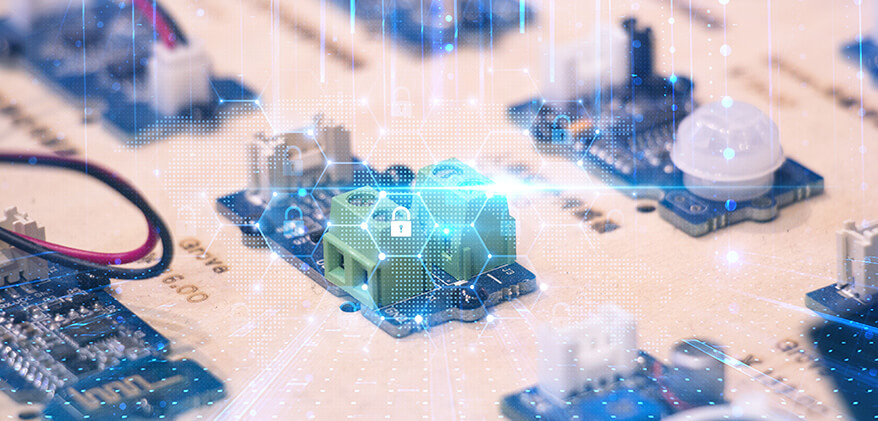How to Make LiPo Battery Charger?
Jun 21, 2019 Pageview:3904
A LiPo battery or lithium-ion polymer battery is a type of rechargeable battery based on the lithium-ion technology. These types of batteries have higher specific energy as compared to other types of lithium battery. That’s why they are used in a wide range of applications where the critical feature is weight such as radio-controlled devices and mobile devices.
The main drawback of LiPo batteries is that they are quite sensitive and thus if there is any mistake while handling them could lead to an explosion. That’s why these batteries need special care and charging mechanism to charge it.
Also, keep in mind that charging these batteries correctly and properly with a charger mainly designed for charging lithium based batteries is crucial to battery life span and to your safety too.
If you are looking for a technique to make a powerful LiPo charger on your own, then you have come to the right page. Here, we will properly instruct you on how to make a LiPo battery charger.
How to Choose a lithium polymer battery Charger?
Are you planning to purchase a LiPo battery charger instead of making it own? If so, then there are certain things you need to consider while buying a lithium polymer battery charger.
· Battery chemistry
This one is quite important. Mostly, lithium battery chargers are mainly designed for lithium-ion phosphate or lithium-ion batteries. The charge voltage is the main difference. You need to select the right type of charge to make sure that you will get the right charge voltage.
· Charging voltage
As you also know that lithium polymer cells should be charged to 4.2V per cell. It means that you will need to buy a charger that comes with an output voltage of 4.2 V X the number of cells in sequences in the battery.
Let’s take an example:
In the case of 10s battery (10 cells in sequence), you need to buy a charger with an output of 4.2 V x 10 cells and that is equal to 42.0 V.
· Charging current
Another important factor you need to consider is charging current. It is recommended that you should not charge lithium cells above 1 c. Here, “C” rating is the battery capacity. Thus, in the case of 3.5 Ah cell, 1C means 3.5 A.
Thus, you should not charge the cells above 0.5. If you are using 3.5 Ah cells, and having four in parallel, then it means that you can charge not more than 7 A. In fact, 7 A is considered to be high charging rate for these batteries.
· Level of quality in chargers
There are a few levels of quality in chargers -
1. Cheap plastic chargers - most of the cheap plastic lithium battery chargers are not so much good in terms of quality. But, there are a few nice ones available in the market.
2. Aluminum case chargers - They have so many different types and better than cheap plastic chargers in terms of quality level. They are capable of providing support for higher power levels and generally, have a cooling fan and some are adjustable too.
3. Balance chargers - In this, you are going to find so many different types of qualities and they are generally designed for the RC world of drones and toy cars.
4. Programmable chargers - It includes chargers such as the Cycle Satiator. They are high-quality chargers come with various features that let you customize or modify the charging profiles.
· Manufacturer
Battery manufacturer also matters. At present, there are a lot of manufacturers out there. There are only a few of them who offer reliable and quality products. While buying a LiPo battery charger, make sure to choose the right and trusted manufacturer.
What If You Lost Your LiPo Battery Charger?
Have you lost your LiPo battery charger you bought recently, and don’t know what to do? Well, there is no doubt that you might be frustrating at this point. But, the good news is that you can make LiPo battery charger on your own if you can’t afford to buy a charger once again.
How to Make LiPo Battery Charger Properly?
The process to make LiPo battery charger is quite a long and so, you definitely need to have patience while making a battery charger appropriately.
Before you begin, there are certain things you require. You need parts - TP4056 module, solar panel, 10k potentiometer, 1.2k resistor, volt-amp meter, 18650 battery holder, USB boost converter, DC jacks, diode, switch, enclosure and wires. You also need tools - soldering iron, wire stripper/cutter, hobby knife, and a glue gun.
Step1: Removing the prog resistor
You need to first locate or find the resistor Rprog position. After locating it, remove it carefully from the PCB top with a soldering iron.
Step 2: Solder the potentiometer
Next, you need to solder 2 small wires from the Rprog solder pads (that you removed in the first step). Now, you need to connect a variable resistor network in order to control the charging current.
The variable resistor network is designed with 10k potentiometer and 1.2k resistor. Solder the 1.2k resistor one leg to the potentiometer middle pin. Attach the other leg to the red wire and then, solder the Black wire to the potentiometer another pin.
Step 3: Make the circuit
Now, solder 2 wires to the Boost converter input terminals (White to the IN- and Red to the IN+). Join the red wires from the battery holder, boost converter and volt-amp meter. Join the black wire from the boost converter white wire and volt-amp meter.
After that, connect the black wire of battery holder and blue wire of the volt-amp meter. Next, solder the Red node or joints to the BAT+ and Black node to the BAT- of the charging board i.e. TP4056.
Step 4: Connecting the DC jack
You can provide the input power for charging board to the mini USB port using a USB cable. However, we have to charge using a solar panel. Thus, a DC jack is attached at the input. First, you need to solder 2 wires to the DC jack and then, solder the white wire to the IN- and red to the IN+ respectively.
Step 5: Solder the volt-amp meter power wires to the boost converter
The power needed for the volt-amp meter should be taken out from the output of the boost converter. At the boost converter backside, you will notice four soldering points or nodes of the USB port. You need two only out of four.
Solder the thin red wire of the volt-amp meter to the + and thin black to the -ve.
Step 6: Testing the circuit
Once you make the circuit, the next step is to test it. Thus, you need to insert the battery to the holder of the battery. Now, you will notice the charging current and battery voltage on the meter display. You can adjust the charging current by rotating the knob of potentiometer slowly.
Step 7: Measuring the components
Next, you need to measure the components using a vernier caliper and then, do marking on the enclosure. And cut the marked portion using a knife and make holes using a drill.
Step 8: Fixing the circuit into the enclosure
Now, insert each and every component in sequence to the appropriate place. Next, apply glue (the hot one) around it. You can also decorate enclosure to look it attractive.
Step 9: Making the solar panel circuit
Now, connect the DC jack (male) to the wires. Solder the diode positive (IN4007) to the positive terminal of the solar panel. Next, solder the diode -ve terminal to the red wire. Solder the black one to the solar panel negative terminal.
Step 10: All set to use
Once you are able to make the enclosure and testing all functionality, check charging via solar panel and USB cable. Run the switch in order to check the output. When you turned on the switch, the blue light of the boost converter will turn on.
That’s all on how you can make LiPo battery charger at home. As you can see that it is not an easy job to make it on your own unless you have done it before. The good news is that you can purchase a lithium polymer battery charger from Dongguan Large Electronics Co., Ltd if you don’t want to go through the above process.
- Prev Article: Lithium-Ion Double-A Rechargeable Batteries
- Next Article: Li-ion battery care tips
Leave Message
Hottest Categories
-
Hottest Industry News
-
Latest Industry News











